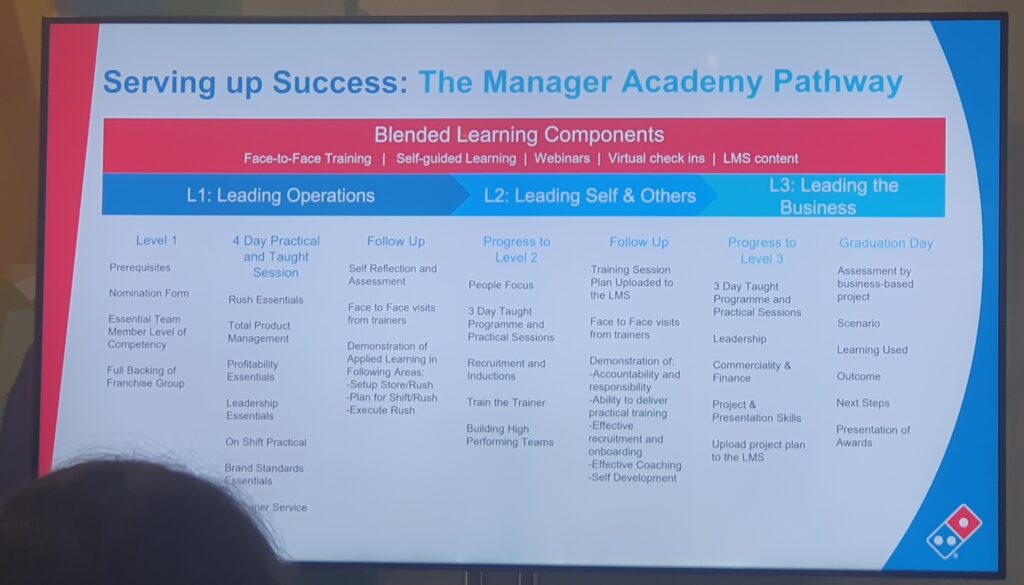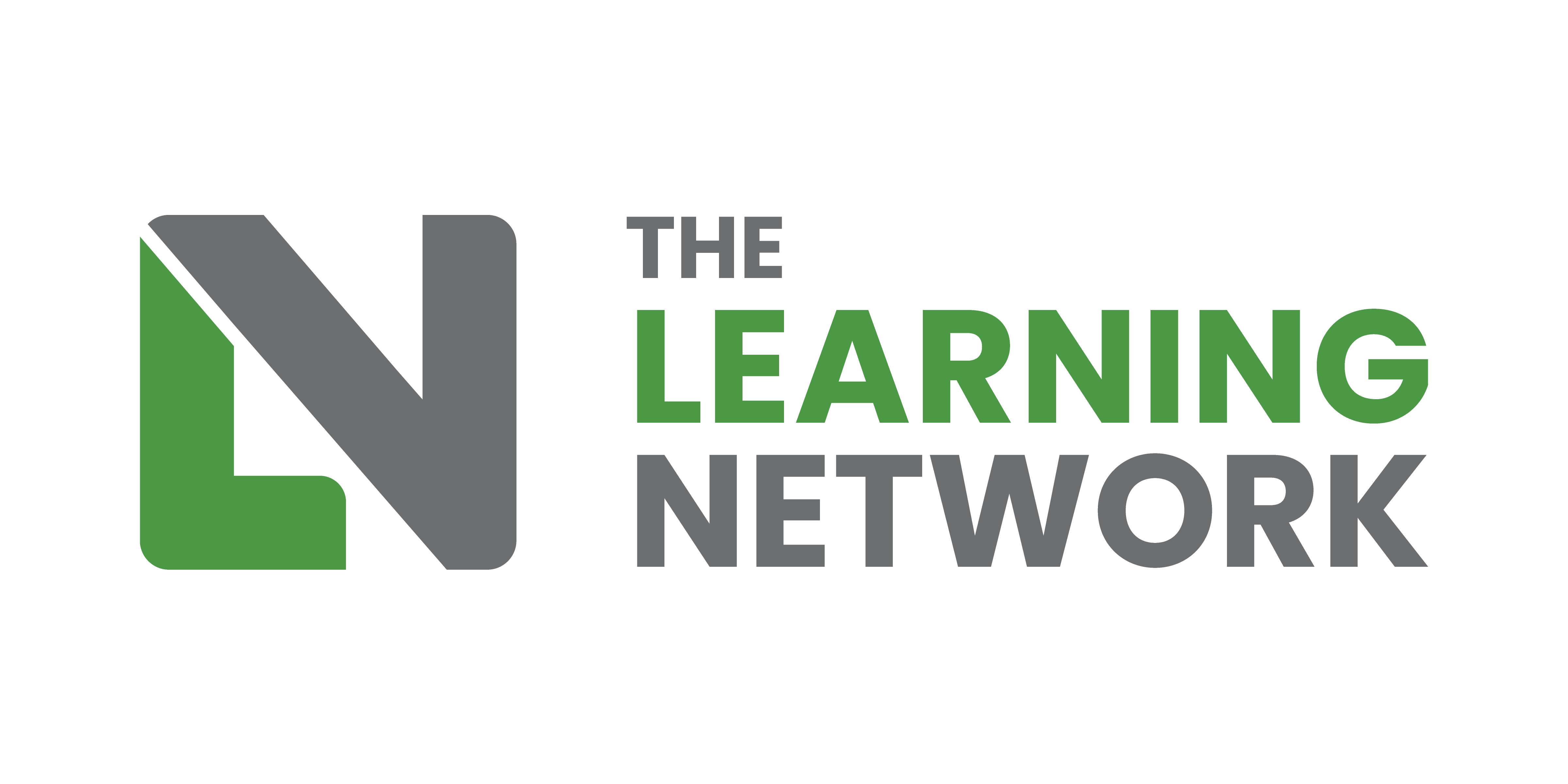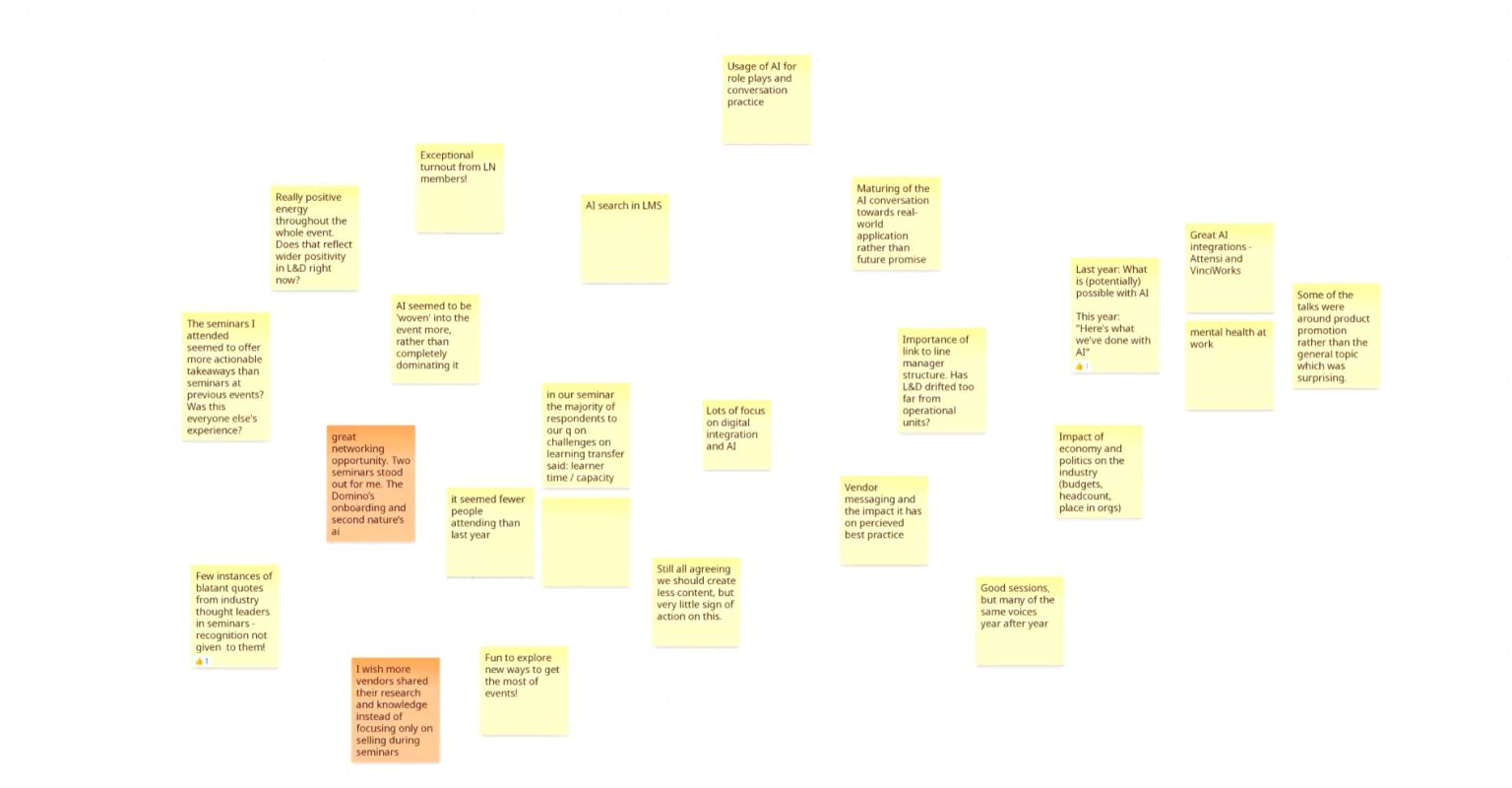The World of Learning Summit in London is a flagship event for our industry; a place where new ideas, industry trends, and a healthy dose of caffeine fuelled optimism come together. Following this year’s event, we held a virtual roundtable discussion unpacking key takeaways, debating industry sentiment, and asking what it all means for our day-to-day work.
So, if you missed the event or simply want to make sense of what was discussed, here’s a breakdown of what stood out, what’s changing (or not), and how these insights might inform your own practice.
A Positive Vibe, But Is L&D Actually in a Good Place?
One of the most consistent themes from the roundtable was the sheer energy at this year’s conference. But does that reflect a wider sense of optimism in the industry? Not necessarily. Some attendees noted that the positive energy may have been carefully curated by event organisers through clever scheduling, balanced speaker distribution across both days, and a wide ranging and interesting programme.
Some vendor experiences suggested that L&D might not be in as strong a position as the conference buzz implied. Reports of job seekers making up a significant portion of booth visitors suggest that employment challenges persist, and freelance contract rates have remained stagnant for years.
What Does This Mean?
While it’s great to feel energised by an event, it’s worth stepping back to assess the real state of the industry. If you’re a freelancer, it might be time to assess your niche, specialisation has long been seen as a strength, but generalising could be an asset in a tougher market. For in-house L&D teams, the broader takeaway might be to stay engaged in the community, keep an eye on job market trends, and advocate for the value of learning internally to ensure continued investment.
AI: Still a Talking Point, But More Grounded
Unlike last year’s AI hype cycle, where discussions revolved around potential and possibilities, this year saw a shift toward practical application. AI wasn’t dominating the conversation as it did in 2023, but it was woven throughout different discussions. Attendees noted:
- AI integration into LMS platforms is improving but still relatively limited in usefulness.
- Some vendors showcased AI-driven conversation tools for role-playing and scenario-based learning.
- There was a noticeable gap between AI vendors’ claims and real-world applications, some impressive tech, but not all of it is accessible or affordable.
Interestingly, a key challenge emerged: many vendors struggled to articulate what made their AI solutions truly different. Some L&D teams are already integrating free AI-powered tools internally, raising questions about whether premium AI products offer enough value to justify their price tags.
What Does This Mean?
If you’re considering AI in your learning strategy, ask vendors tough questions. What makes their solution unique? What are the practical applications beyond the flashy demos? And crucially, can you achieve similar results with free or low-cost alternatives? AI is a tool, not a magic bullet, and the focus should always be on solving real problems, not just adopting tech for the sake of it.
A Disconnect Between Technology and Reality
Another common thread in the roundtable was the noticeable gap between the futuristic tools on display and the everyday struggles of L&D teams. While vendors showcased cutting-edge AI, interactive avatars, and immersive platforms, many practitioners are still wrestling with the basics, like getting learners to log into an LMS in the first place!
This disconnect raises an important question: Are we developing solutions that actually meet workplace learning needs, or are we creating increasingly complex tools that require significant buy-in before they even get used? As one attendee put it, “the L&D world sometimes feels like a bubble, where we talk to ourselves about new frameworks, platforms, and methodologies without fully addressing the practical challenges that exist in organisations.”
What Does This Mean?
Before investing in the latest tech, take a step back and assess your actual learning challenges. If your biggest issue is engagement, throwing AI into the mix won’t fix it, focusing on relevance, usability, and learner motivation might. Be critical of claims, and always test whether a new tool will solve an existing problem or just add another layer of complexity.
Mental Health, Wellbeing, and Productivity
A particularly insightful discussion emerged around mental health and workload management. JigSaw highlighted the importance of factoring in the cognitive load of tasks people dislike, acknowledging that work we don’t enjoy often takes longer and is more draining.
The roundtable expanded on this, discussing techniques for tracking workload realistically, managing energy levels, and creating a culture where people feel safe admitting when they’re stuck. A concept called “Sludge” was mentioned, essentially a way for team members to flag tasks they’re struggling with, so others can offer support. It’s a simple but effective way to create visibility around workload challenges without the stigma of saying, “I’m stuck.”
What Does This Mean?
The conversation around mental health in L&D is growing, but it needs to be more than just a side discussion. Whether it’s through better workload tracking, realistic project estimations, or fostering open conversations about burnout, L&D teams need to practise what they preach when it comes to wellbeing. If you’re leading a team, consider introducing a “sludge” system or another way for team members to flag when they need help without fear of judgment.
The Importance of Real-World Data and Case Studies
One of the standout sessions at the conference was Domino’s presentation on their management academy. What set this case study apart was its structured, data-backed approach. Instead of vague learning metrics, they had clear competency tracking, pre-and post-programme measurements, and structured progression plans.
Too often, our initiatives are designed, launched, and then left without proper follow-up. The Domino’s example highlighted the importance of continuous evaluation and iteration.
What Does This Mean?
If you’re running a learning programme, think beyond launch day. How are you tracking effectiveness over time? What metrics actually matter? And how can you demonstrate impact to leadership in a way that goes beyond attendance numbers and smile sheets? The more we can prove real-world impact, the stronger our position within the organisation.

Final Thoughts
This year’s World of Learning offered valuable insights into where our industry may be heading but also highlighted many ongoing challenges the industry faces. The positivity of the event was refreshing, but it’s clear that L&D professionals need to remain critical thinkers, questioning tech claims, focusing on real-world challenges, and ensuring our own wellbeing as we navigate the challenging year ahead.
If there’s one takeaway, it’s this: L&D thrives when it stays grounded. Whether it’s AI, engagement strategies, or productivity techniques, the best solutions are the ones that actually work, not just the ones that look impressive on a conference stage.
Thank you to the roundtable attendees for sharing your insights, thoughts and observations. Kristina Rodier, Kateryna Yermak, Katrin Homer, Elmira, and Sarah.



